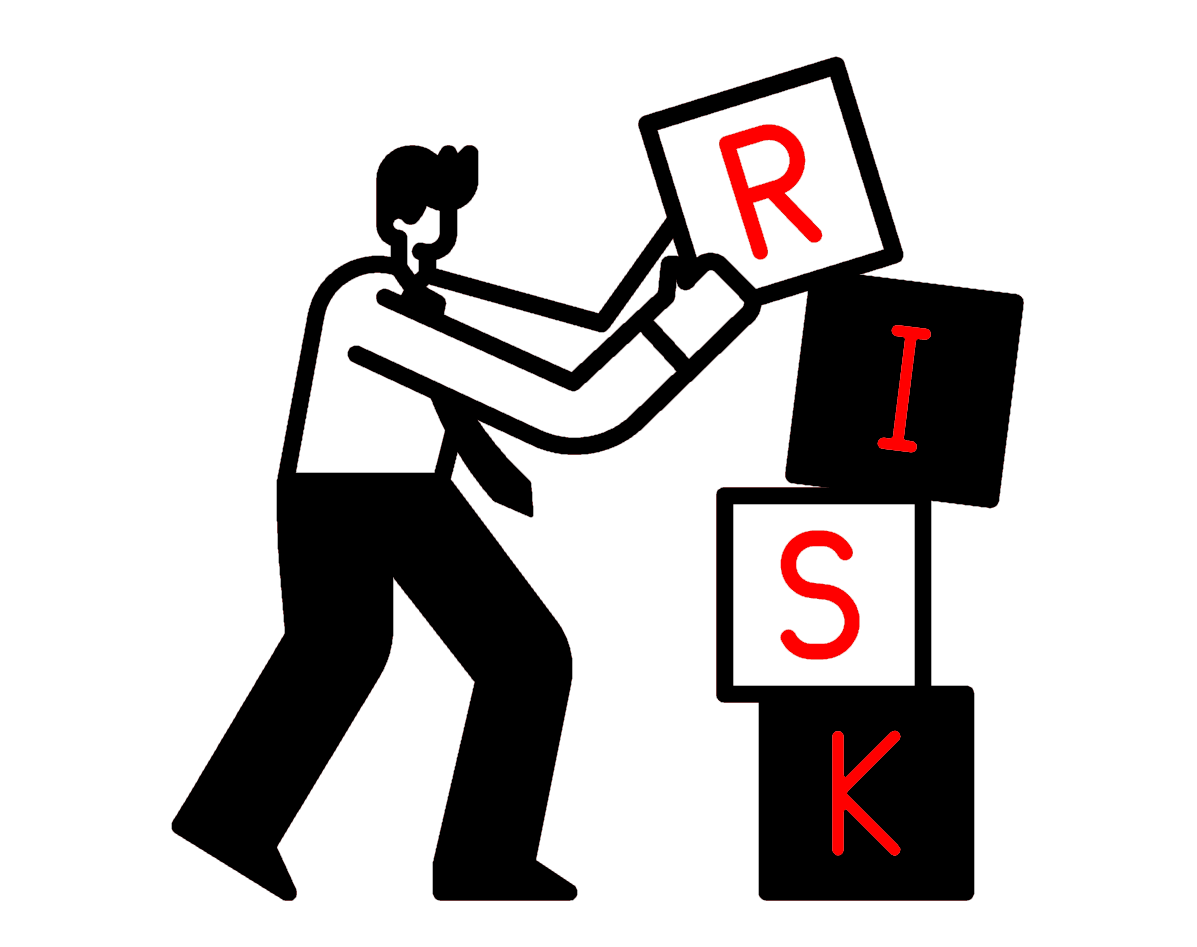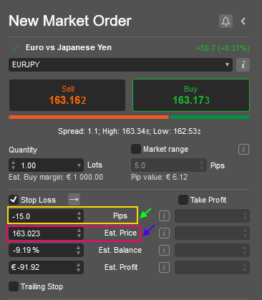Ever felt like you’re teetering on the edge of a financial cliff, one wrong step away from wiping out your trading account? If that sounds familiar, you’re not alone. Many traders find themselves in this precarious position, but risk management is one crucial skill that can make all the difference.
While some may perceive risk management in forex trading as a complex labyrinth, it boils down to three key components:
- Know Your Risk Tolerance: This is like knowing how much heat you can handle in your food – everyone has their threshold. Understanding your risk tolerance means knowing how much you’re willing to lose on a trade without losing sleep at night. Honesty is crucial, as trading outside your comfort zone can lead to impulsive decisions and costly mistakes.
- Master Stop Loss Placement: Think of stop loss orders as your safety net in the trading arena. They’re like the guardrails on a highway, preventing you from careening off the road if things go south. Knowing where to place your stop loss orders is essential for limiting potential losses and preserving capital. This involves analyzing the market, identifying key support and resistance levels, and setting stop loss points accordingly.
- Calculate Your Position Size: Imagine you’re playing a game of chess – you wouldn’t bet your entire army on one move, would you? Similarly, determining the appropriate position size in trading is crucial for managing risk. This involves considering account size, risk tolerance, and the distance to your stop loss. By calculating your position size effectively, you can ensure that no single trade has the power to sink your entire portfolio.
These are the three pillars of risk management: protecting what you’ve worked hard to earn.
Risk Tolerance
What is Risk Tolerance?
Risk tolerance is the amount of money you’re willing to put on the line for a single trade. Every time you enter a trade, you expose yourself to a certain level of risk, which is determined by two main factors: the distance to your stop loss order (in pips) and the size of your position.
You aim to ensure that the total risk associated with a trade – measured by the distance to your stop loss and position size – does not exceed your predetermined risk tolerance. This is crucial because you should never risk more than you’re comfortable losing on any trade.
Let’s break it down with an example. Suppose you have a $5000 trading account. Your risk tolerance, expressed as a percentage of your account balance, might fall between 1% and 3%. This means you’re willing to risk between $50 and $150 on each trade.
To ensure you adhere to your risk tolerance (RT), every trade you take should not exceed the maximum dollar amount or percentage specified. For instance, if your risk tolerance is 3%, you shouldn’t risk more than $150 on any trade.
It’s important to understand that no one else can determine your risk tolerance – it’s a personal decision based on your financial situation and comfort level with potential losses.
Now, for beginners, this might seem overwhelming, but there’s a simple way to calculate your risk per trade. This method helps to remove emotions from your trading decisions, which is crucial for maintaining discipline and avoiding impulsive actions.
Emotions can easily take over if you risk more than your predetermined amount or trade without a stop loss. Fear of losing might lead you to prematurely adjust your stop loss or exit trades based on emotion rather than logic.
Trading based on emotions is a surefire way to deplete your account and hinder your journey toward profitability. By incorporating risk tolerance into your risk management plan, you can mitigate emotional interference and trade confidently, knowing you’re only risking what you’re comfortable losing.
Stop Loss Orders and How to Use Them Correctly
Imagine you’re buying into the market, anticipating a price increase. However, you need to define a point where you admit you’re wrong about the trade – this is where the stop loss comes into play. Typically, you’d place your stop loss below a previous swing low, as this level indicates a potential reversal point where your trade thesis may be invalidated.
Setting a stop loss order is straightforward. Most trading platforms offer the option to place stop-loss orders alongside your trade entry. You simply specify the price at which you want the stop loss to trigger, or you can choose to set it based on the number of pips away from your entry price.
Now, let’s tie this back to risk management. Once you’ve determined your risk tolerance, setting a stop loss ensures you exit the trade if it moves against you beyond a certain point. This helps limit potential losses and protects your account from significant drawdowns.
By incorporating stop-loss orders into your trading strategy, you manage risk effectively while maintaining discipline and control over your trades. Emotions like fear and greed can often cloud judgment, but stop-loss orders provide a clear and objective way to exit losing positions.
Calculate your Position Size
What is a Position Size?
Position size refers to the amount of currency units you decide to trade with in a particular trade. It determines the scale of your trading activity and directly impacts the potential gains or losses you may experience.
Calculating position size involves considering Risk Tolerance (RT) and the distance to your stop loss in pips.
Combining these elements helps determine the appropriate position size to limit potential losses and align with your risk management strategy.
Let’s take a look at the table below;
| POSITION SIZE | LPP |
| 1000 Units | $0.1 |
| 10,000 Units | $1 |
| 100,000 Units | $10 |
We use the Loss in dollars Per Pip (LPP) concept to calculate position size. LPP represents the amount of money you stand to lose for each pip movement in the market.
Here’s a simplified breakdown of position sizing using common trading units:
- Micro Lot (1,000 units): Each pip movement equals a small fraction of a dollar. For instance, if you trade with 1,000 units and the market moves by one pip, you lose 10 cents.
- Mini Lot (10,000 units): With a mini lot, each pip movement corresponds to $1. Therefore, if you trade with two mini lots and the market moves down by two pips, you’d lose $2.
- Standard Lot (100,000 units): Trading a standard lot involves larger positions, where each pip movement equals $10. If you trade two standard lots and the market moves against you by six pips, you’d incur a loss of $120.
To simplify position sizing, traders often refer to the table that guides you on the relationship between position size and pip movement for different trading units.
So far, we’ve covered two critical aspects of risk management: risk tolerance and stop losses. These elements form the foundation for calculating your position size effectively, as outlined in the formula: Risk Tolerance ÷ Stop Loss (in pips) = Loss in dollars Per Pip (LPP).
Let’s put this formula into practice with an example:
Suppose you have a $10,000 trading account and are willing to risk 1% (0.01) of your account on a single trade. This equates to $100. If your stop loss is set at 25 pips, applying the formula gives us an LPP of $4 per pip – meaning you’ll lose $4 for every pip movement against your position.
Now, referring to the position sizing table, you can determine the appropriate position size.
The table indicates that $1 LPP = 10,000 units (1 mini lot). Multiplying $4 by $1 LPP gives you $4 LPP, meaning your position size should be 40,000 units or four mini lots.
It’s important to note that this formula and approach are scalable, applicable to trading accounts of any size – whether a modest $20 account or a substantial $100,000 account.
If your calculated LPP doesn’t align precisely with a whole number, round it to the nearest dollar for simplicity. For example, if your LPP is $15.44, round it to $15. If it’s $15.65, round it to $16. Then, apply this value to the position sizing table to determine your position size.
Once you’ve calculated your position size, you can input this information into your brokerage platform to execute the trade.
With practice, calculating position sizes using this formula becomes second nature. It’s a fundamental skill that empowers traders to manage risk effectively and make informed trading decisions, regardless of their account size.
Practicing this calculation regularly will make it easier to determine position sizes quickly and accurately for any trading account size.
If you find this process overwhelming, BabyPips provides a position size calculator, or if your broker uses trading platforms like TradingView, it automates these calculations. If your broker doesn’t use this platform, this formula is advantageous.
I suggest adopting this method because it eliminates the need to search for a position size calculator online. The calculations make it particularly advantageous if you aspire to become a professional trader.
With this approach, you won’t have to toggle between different platforms, saving you time and streamlining your trading process. Soon enough, you’ll have the calculations at your fingertips, enhancing your efficiency and decision-making abilities in forex trading.
Final Thoughts
Remember, risk management in forex trading is not a one-size-fits-all approach. It’s essential to tailor your risk tolerance, stop loss levels, and position sizes according to your trading style and financial goals.
Now that you understand the process take some time to practice and refine your skills. As you become more proficient, you’ll gain confidence in navigating the markets with discipline and precision.
Feel free to share your experiences and insights in the comments below. Your feedback is valuable and can enrich the learning experience for all traders.
- 8 Best Prop Firms USA: Real trader Reviews and Payouts - March 10, 2025
- Forex Trading in Uganda: Start With $10—An Incredible Opportunity on a Tight Budget! - February 24, 2025
- Master Forex Trading Algorithms: Your Path to Success in 2025 - February 17, 2025




